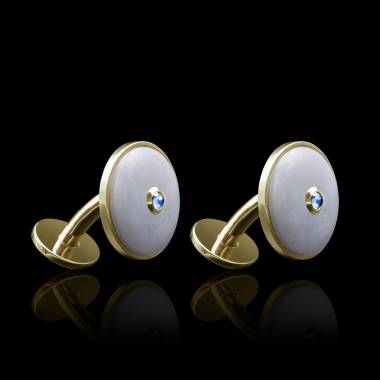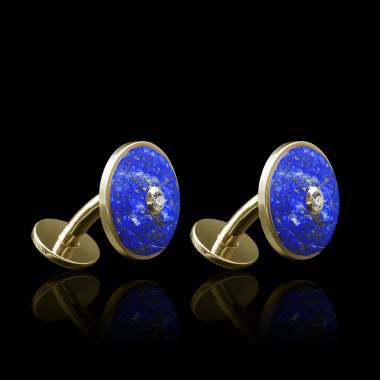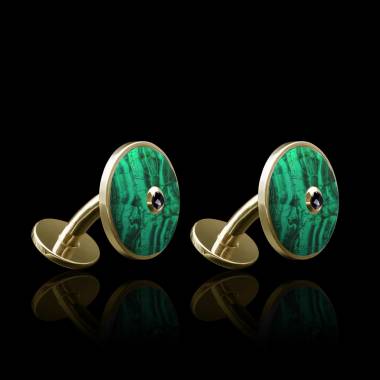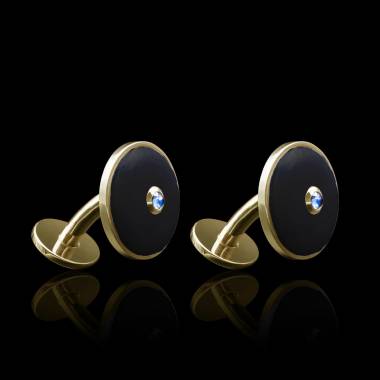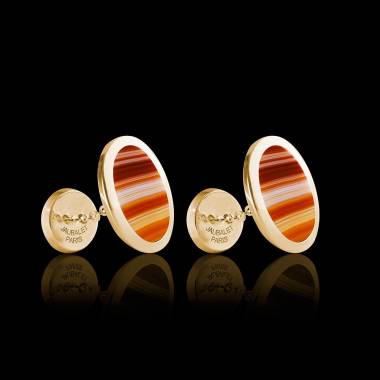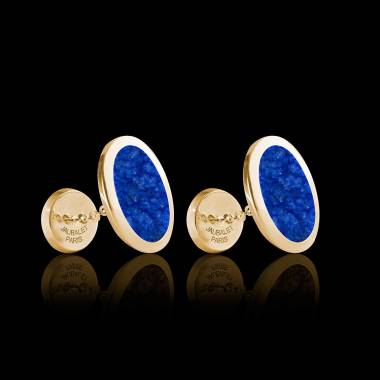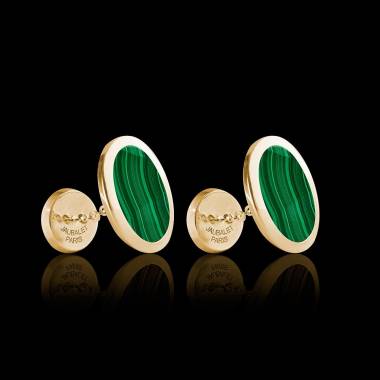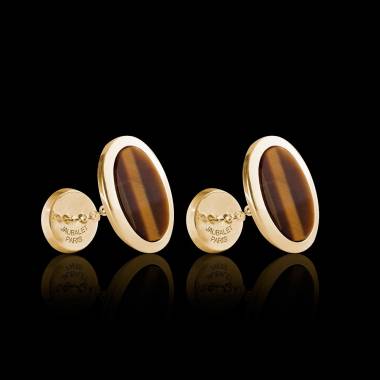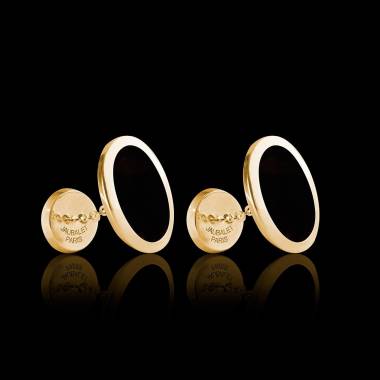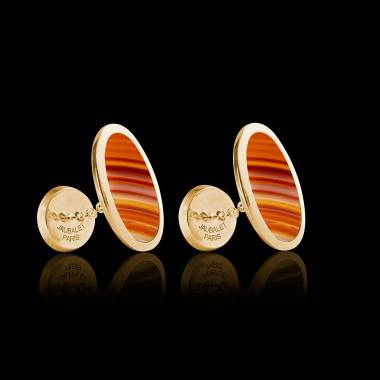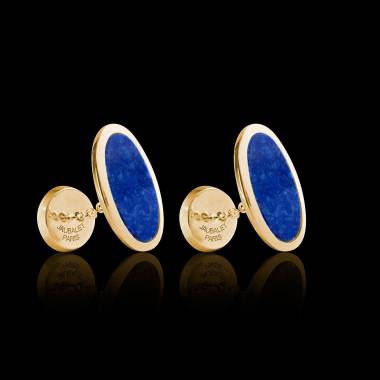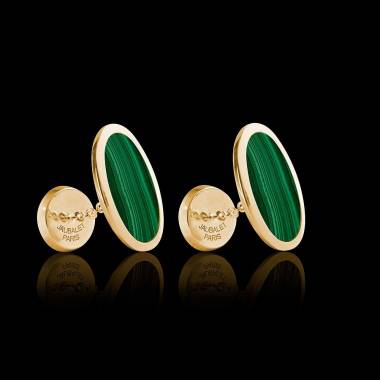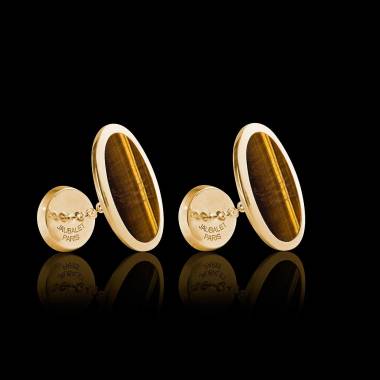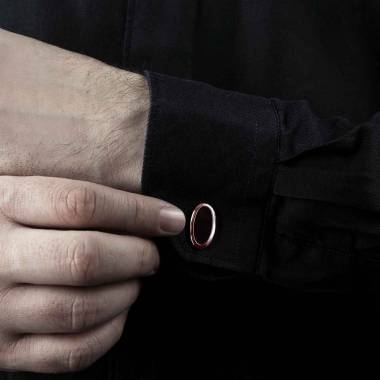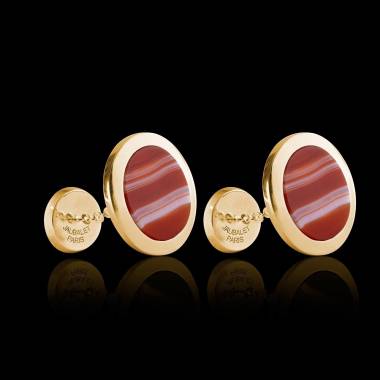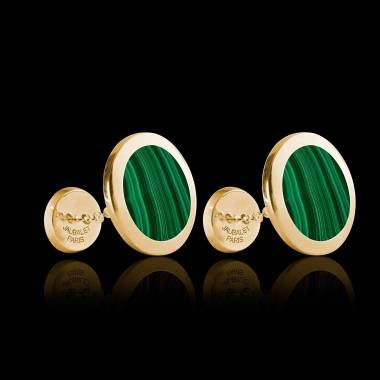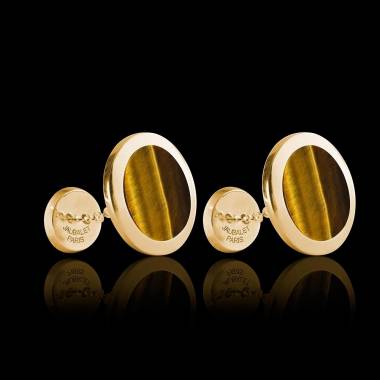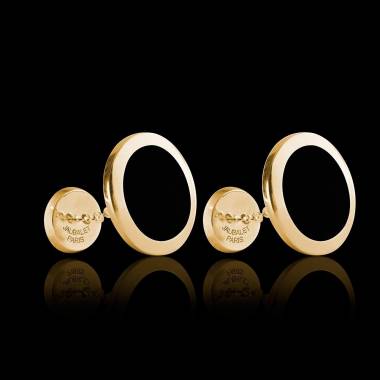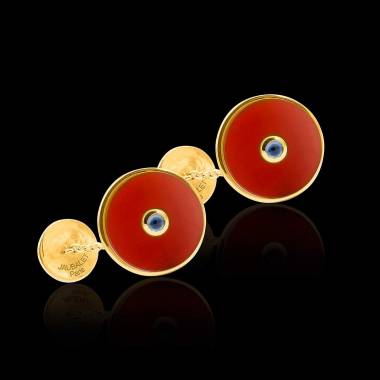Jaubalet Paris: Buying Guide
Virtues of the Cufflinks
Yellow Gold Silver-Gilt Cufflinks are used to attach mousquetaire-type shirtsleeves. They were formerly made of two buttons connected by a chain. Today many different types of cufflinks exist: silk or cotton knots, stud/button cufflinks, bullet back and toggle closure cufflinks, locking cufflinks. There are also many different materials including silver, brass, rhodium-plated cufflinks, palladium, mother of pearl, crystal, and what interests us here silver-gilt. Vermeil* or silver-gilt is a precious metal and is made of solid metal covered with a layer of gold i.e. gold-plated silver. Silver-gilt is obtained following a chemical process called electroplating which consists of applying a thin layer of gold on solid silver. The quality of the gold used is subject to different legislation depending on the country. In France, the gold must be 75% pure and at least 5 microns thick. Jewelry obtained this way is durable, wear-resistant, and maintains its luster longer. In addition, it does not tarnish and is scratch-resistant.
Taking care of your cufflinks
Vermeil, also known as silver-gilt, results from a chemical process and therefore requires special care. Abrasive products may scratch the surface or remove a layer of gold. To care for your yellow gold silver-gilt cufflinks, delicately rub them with a soft cloth and soapy water, rinse then dry them. If your cufflinks are very dirty, rubbing alcohol can also be used. Mix 4 drops of warm water with one drop of alcohol and as above use, soft cloth dipped in the solution, rinse and dry. White wine vinegar and warm water can be used as well. Quickly rinse after cleaning it with the vinegar solution. Cover yellow gold silver-gilt cufflinks with bees’ wax to better protect them.














